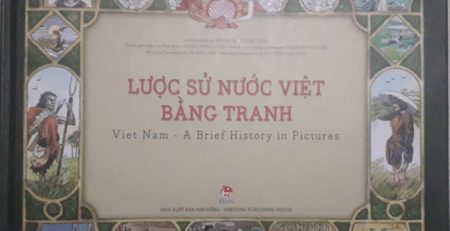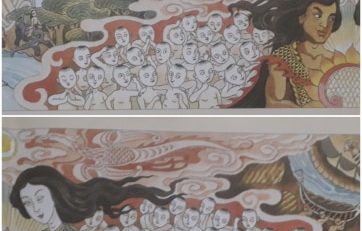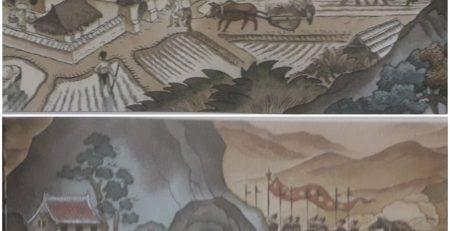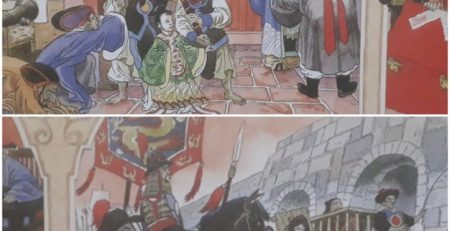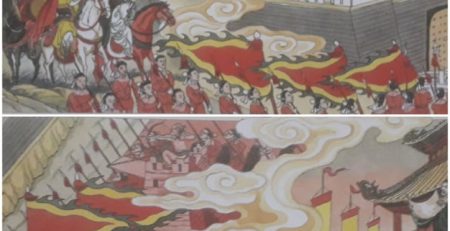Chapter 14 : NGUYỄN DYNASTY
In the autumn of 1792, Emperor Quang Trung suddenly passed away. The Tây Sơn Dynasty started to decline. Taking advantage of this situation, Lord Nguyễn Phúc Khoát’s grandchild, Nguyễn Ánh (1765-1820) attacked and conquered the Tây Sơn’s citadels, establishing the Nguyễn Dynasty in 1802. Nguyễn Ánh became Emperor Gia Long, founding the imperial capital in Phú Xuân (Huế). Two years later, he renamed the kingdom Vietnam. In 1838, his son, Emperor Minh Mạng once again renamed the kingdom Đại Nam.
The Nguyễn Dynasty existed in 143 years with 13 emperors: Gia Long, Minh Mạng, Thiệu Trị, Tự Đức, Dục Đức, Hiệp Hòa, Kiến Phúc, Hàm Nghi, Đồng Khánh, Thành Thái, Duy Tân, Khải Định, Bảo Đại. During the regions of first Nguyễn emperors, the country experienced a sustainable development; economy and culture were restored. Commerce was boosted. Royal examinations were held regularly to select talents.
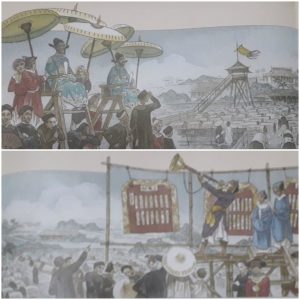
Emperor Gia Long strongly promoted Confucianism, he had Temple of Literature built in town to worship Confucius, established Quốc Tử Giám in 1803 at Huế Citadel to educate mandarins and the students, organized Hương examinations to select people with knowledge and morality to become officials. The emperor issued edicts on the establishment of schools in the provinces, assigned schools’ staffs, teachers and educational system, at the same time he re-established examinations in towns. In every town there was an education offer in charge of education.
According to usual routine, the court held local Hương examinations every 3 years. Those who aced the examinations were called bachelors; those who passed were called baccalaureates. The following year, in the Capital, The Ministry of Rites organized the Hội examination, if the new bachelors participated and passed, they would be allowed to take part in the Đinh examination inside the Royal Palace to compete for the Doctorate title. Together with the development of Confucianism, a number of Western cultural values began to be integrated into the Vietnamese culture such as the introduction of Christianity, followed by the creation and development of the Vietnamese alphabet.
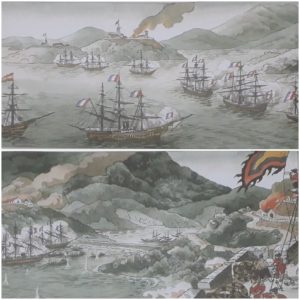
However, the Nguyễn Court dignified Confucianism as the monolatry to extreme. Later, Confucianism became increasingly corrupted, conservative, did not open to the outer world and separated itself from the nation’s interests. Facing the to-be-or-not-to-be situation of nation, many progressive scholars and intellectuals, notably Nguyễn Trường Tộ (1828-1871), submitted their proposals to the Emperor and suggested in vain a national reform.
Vietnam became a target for Western colonialists who were hunting for new colonies. In 1858, the French-Spanish troops attacked Sơn Trà peninsula (Đà Nẵng), starting their invasive war. After the death of Emperor Tự Đức in 1883, the Court fell into confusion. French colonialists attacked the Thuận An Estuary (Huế), forcing the Court to the sign the capitulations Harmand (1883) and Paternoster (1884). Within nearly three decades of invasion and Pacification, the French imposed their all-sided domination over Vietnam.
Continue your reading here, with next chapter.
VIETNAM – A BRIEF HISTORY IN PICTURES
Compiled by: HIẾU MINH – HUYỀN TRANG (in Vietnamese language)
With an introduction of Historian DƯƠNG TRUNG QUỐC
Illustrated by TẠ HUY LONG
Translated by: NGUYỄN XUÂN HỒNG
P/s: Completed by the volunteers: Nguyễn Ngọc Bích – Second-year student of Foreign Trade University; Takanori Kano from Japan; Antoine Roels from Belgium; Linh – The coordinator of SJ Vietnam.


